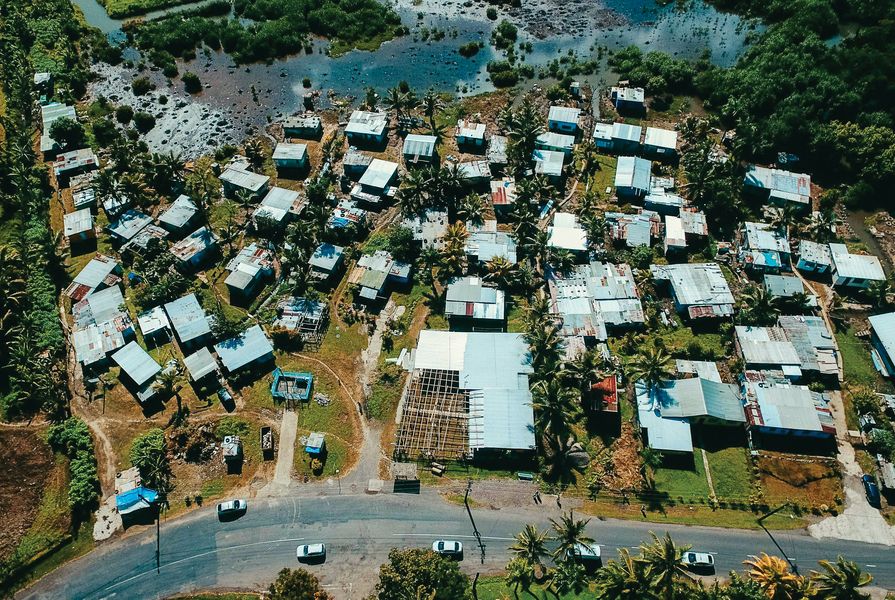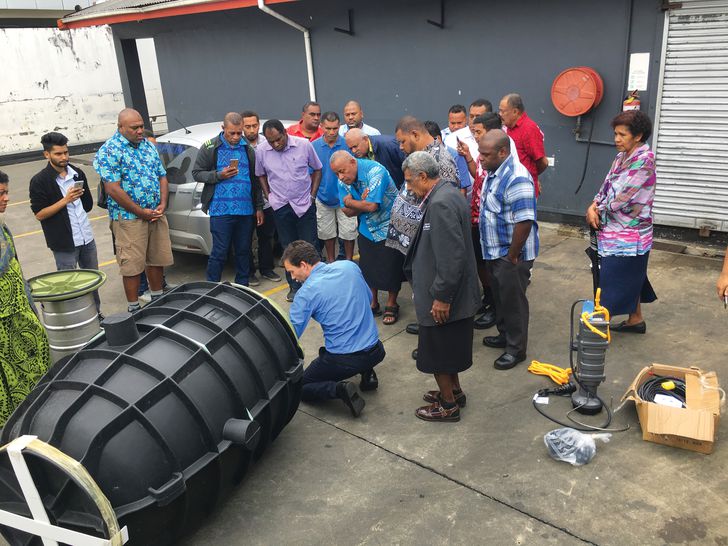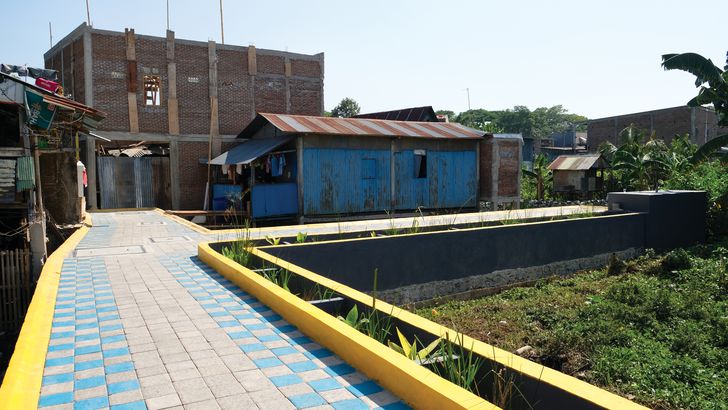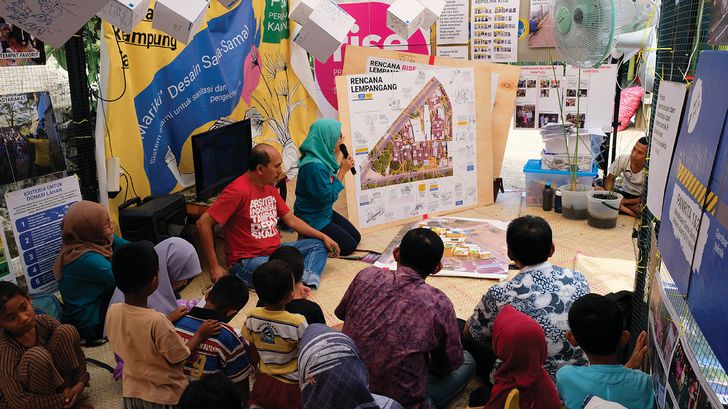Since August 2017, the Revitalising Informal Settlements and their Environments (RISE) project, a five-year program set for completion in 2022, has aimed to improve human, environmental and ecological health in urban informal settlements through the implementation of a new approach to the use and provision of water.
Working across nine countries, the RISE team of public health specialists, engineers, architects, ecologists, social scientists, economists, community development practitioners and landscape architects is implementing projects in 12 informal settlements in Makassar, Indonesia and 12 in Suva, Fiji’s capital. Across its 24 sites, RISE is embracing the participation of some 1,200 households throughout South-East Asia and the Pacific.
The project, funded in various parts by the Wellcome Trust, Asian Development Bank and the New Zealand Aid program, is being implemented, in part, using a reflexive design research process that aims to empirically test the impact of a water-sensitive-cities-driven intervention, while providing scope for the development and refinement of such interventions along the way. Within the project’s five objectives of design and engagement; ecology and environment; human health; wellbeing; and policy and investment, I have been working as part of the team responsible for the design, development and delivery of site-specific interventions for each of the 24 sites.
Members of RISE Community Engagement Committee and local authority stakeholders attend a training session on green infrastructure operation and maintenance.
Image: RISE
Conventional trunk infrastructure (infrastructure shared between multiple developments rather than being internal to a single development site) tends to be highly expensive, with lengthy construction periods, and with the further drawback that the whole system needs to be in place before each household can connect to it and receive the benefits. For these reasons, trunk infrastructure often does not reach informal settlements, with many households and generations of families left without adequate sanitation.
At the opposite end of the spectrum, growing evidence in the WASH (water, sanitation and hygiene) sector seems to suggest that traditional approaches, such as providing latrines, are not always effective. Although interventions such as these operate at the local scale, they often fail to respond to the particularities of their contexts. For instance, the provision of a toilet will not be effective if it cannot be accessed in times of flooding or due to the risk of violence. An issue with WASH projects to date, has been their relative inflexibility – the ability to learn and adapt has not been included in the design and implementation process.
The RISE approach takes a middle ground, between that of traditional WASH and traditional trunk infrastructure. While WSUD principles and the water-sensitive cities approach are very familiar to landscape architects practicing in Australia, RISE is trialling its use in the very different setting of informal urban settlements. RISE teams are experimenting with the implementation of a decentralized, integrated water management system that uses water infrastructure, including constructed wetlands, biofiltration gardens, stormwater harvesting, and local sanitation systems that are based on “smart” sewage tanks that macerate and then pump waste to remote septic tanks and other off-site treatment facilities. Additionally, stormwater runoff is also being managed locally, in response to the factors that negatively impact water at each site. These strategies include the use of swales, surface wetlands and biofiltration gardens, inorder to minimize flooding and environmental pollution.
In both Makassar and Suva, RISE teams have been working in collaboration with local architectural and engineering colleagues to develop designs that reflect the input of members of each community, spanning age, language, familial groups and more. Broad, deep and sustained engagement has been a critical factor in enabling the RISE team’s vision to be developed and implemented. It is through such engagement that each respective community has been empowered to share deeply personal matters around local dynamics and household activities.
Siting and locating project infrastructure, for example, has required an appreciation of how community members see and value their neighbourhood – its contested areas, how they are perceived by different groups – as well as a nuanced understanding of existing individual and collective practises around water and sanitation. Unsurprisingly, the engagement process has revealed situations that were not immediately apparent, such as the power imbalances created by the control of a reliable water supply by one household or group. It has also enabled a significant part of the research process – the collection of settlement rainfall data by local citizen scientists – which has, in turn, informed our design responses.
This dedicated engagement process has also allowed us to work with city authorities in Makassar to secure budgets that enable community residents to access housing upgrades and other programs, and has fostered the ongoing development of agreements with utility providers in both Makassar and Suva, for ongoing operation and maintenance. Through the considered engagement with local residents, we have been able to implement baseline and continuing human health, wellbeing, environmental and ecological monitoring across each of the communities. The continuing operation and maintenance of the project is further founded in the sharing between municipal agencies and communities of physical and financial commitment. Beyond the life of the research project, the infrastructure we build has a technical function and will form a permanent physical addition to each neighbourhood.
A presentation of community plans as part of the intensive co-design process, “Panrita.”
Image: RISE
As an Australian practitioner who has worked on a number of WSUD projects (including the recent Big Plans for Small Creek, involving the renaturalization of Small Creek in Queensland’s Ipswich), my work in Fiji and Indonesia – and specifically in the context of informal urban settlements – has brought forth new experiences and unforeseen challenges. As a woman of Irish and Scottish descent, who has spent most of her life living and working on the land of the Turrbal and Jagera people in south-east Queensland, learning more of both Fiji and Indonesia’s histories and cultures has been a privilege. The delivery of the project in its various phases has also necessitated a rapid and ongoing learning and orientation process, this time around new legislative and regulatory frameworks, radically different approval processes, and new materials, supply chains and methods of construction.
Roles for landscape architects on public projects often involve advocating for equity, championing inclusion and accessibility, and bringing into public view the unseen and overlooked narratives of a place. Could we do more? I, for one, look forward to trying.
Source
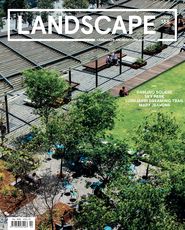
Practice
Published online: 3 Jun 2020
Words:
Amalie Wright
Images:
RISE
Issue
Landscape Architecture Australia, May 2020

